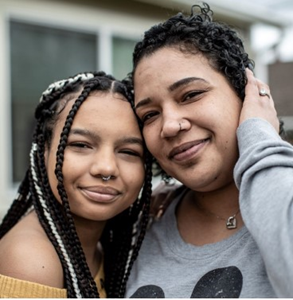Home Together 2026 Community Plan – Key Takeaways
- Building from the Centering Racial Equity in Homeless System Design report (released in 2021), the Home Together 2026 Community Plan calls for promoting racial equity through focused work to reduce the racial disparities that shape homelessness in Alameda County, including adding housing resources that more equitably address the conditions leading to higher rates of homelessness among Black, Indigenous, and other people of color (BIPOC).
- Increased investment in prevention and the addition of more than 24,000 housing opportunities in a variety of program models are needed to reach a point within five years at which the number of people who become homeless in a year and the number who are able to leave homelessness in that time are in balance. These 24,000+ interventions include everything from short-term support to prevent homelessness to ongoing rental subsidies and supportive housing with services.
- The total cost of increasing homelessness response system operations for shelter and housing inventory over five years would be approximately $2.5 billion.
- Taken together, a significant increase in investment and the creation of new program models and pathways out of homelessness will lead to decreases in new homelessness, improved racial equity in outcomes, shorter lengths of time being homeless, and a reduced rate at which people return to homelessness.
Annual Home Together Progress Updates
Progress on the implementation of the Home Together Plan is reported annually. Data is collected annually in the following areas to analyze progress towards the Home Together goals and to inform strategic planning for Alameda County’s homelessness response system:
- Funding and investments
- System inventory
- Home Together strategies and activities
- Key service and outcome measures
 |
Home Together Year 2 Progress Update
In the second year of the Plan, continued progress was made, and more people were housed than in past years. However, growth in new homelessness also continued, leaving significant gaps that require additional resources to fill. Progress on certain key system outcomes was made, including higher housing rates, and reductions in returns to homelessness and in some racial disparities, but overall, the system lost critical resources as demand continued to grow. Currently, though significant impacts have been made relative to current investment levels, the community is not on track to meet the Home Together goals without a significant influx of resources and housing.
The following are key takeaways from the Home Together Plan’s second year of implementation:
Home Together Year 2 Progress Update Report |
  |
